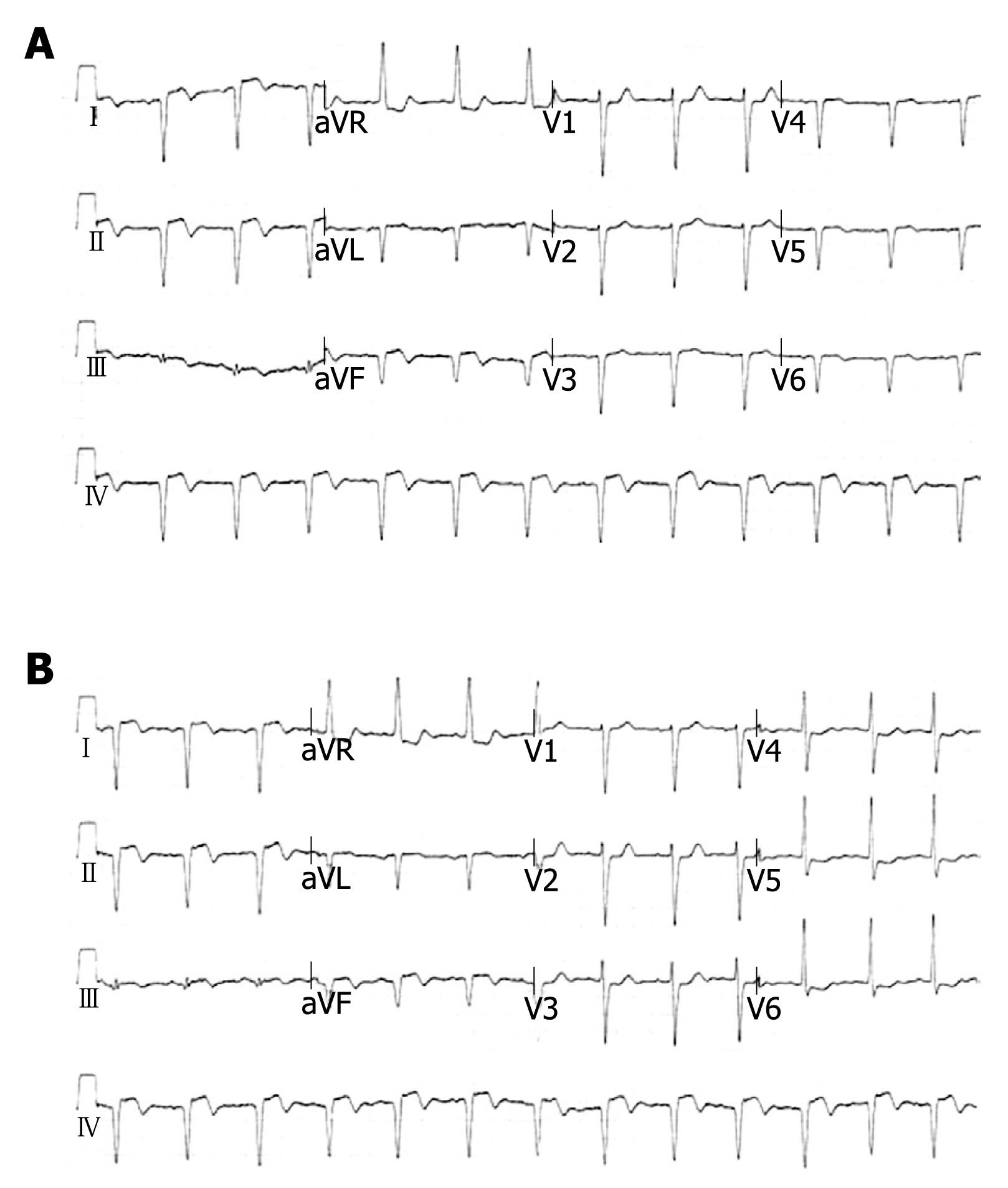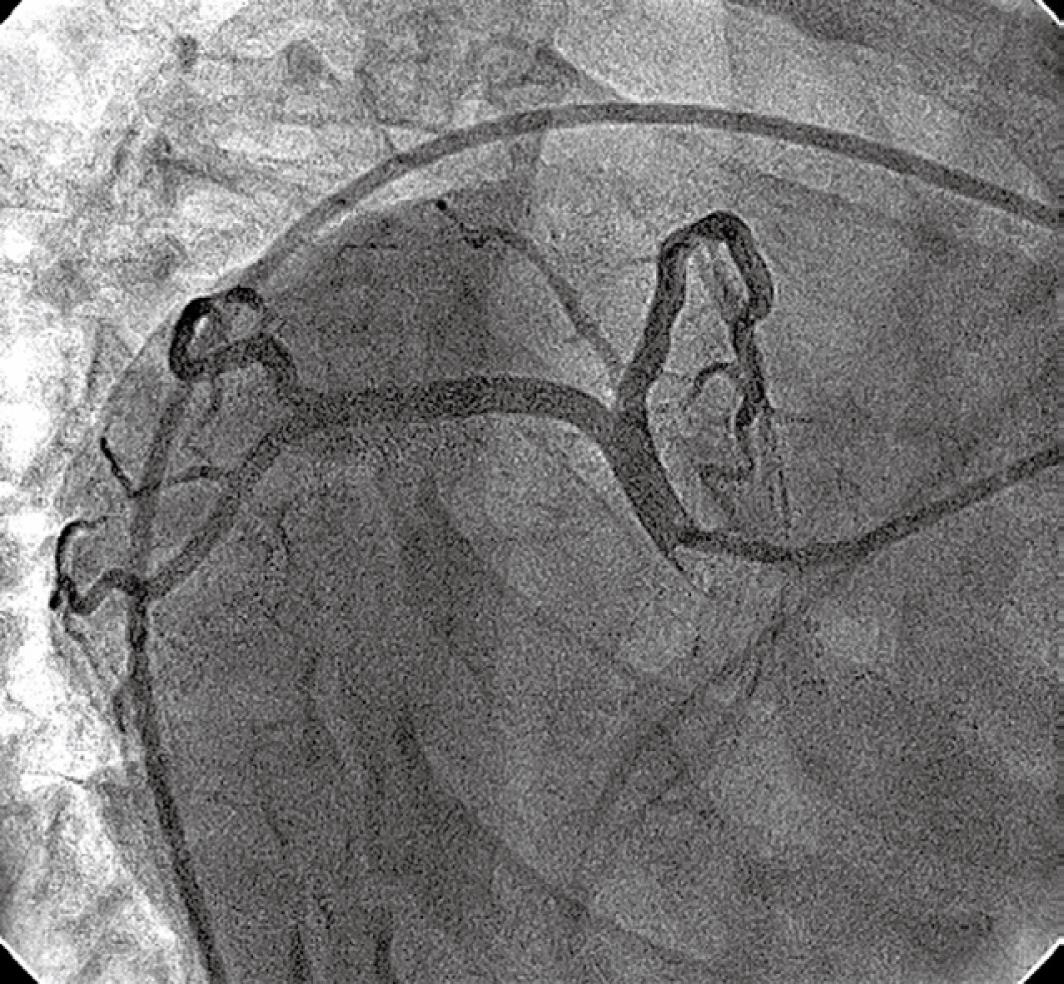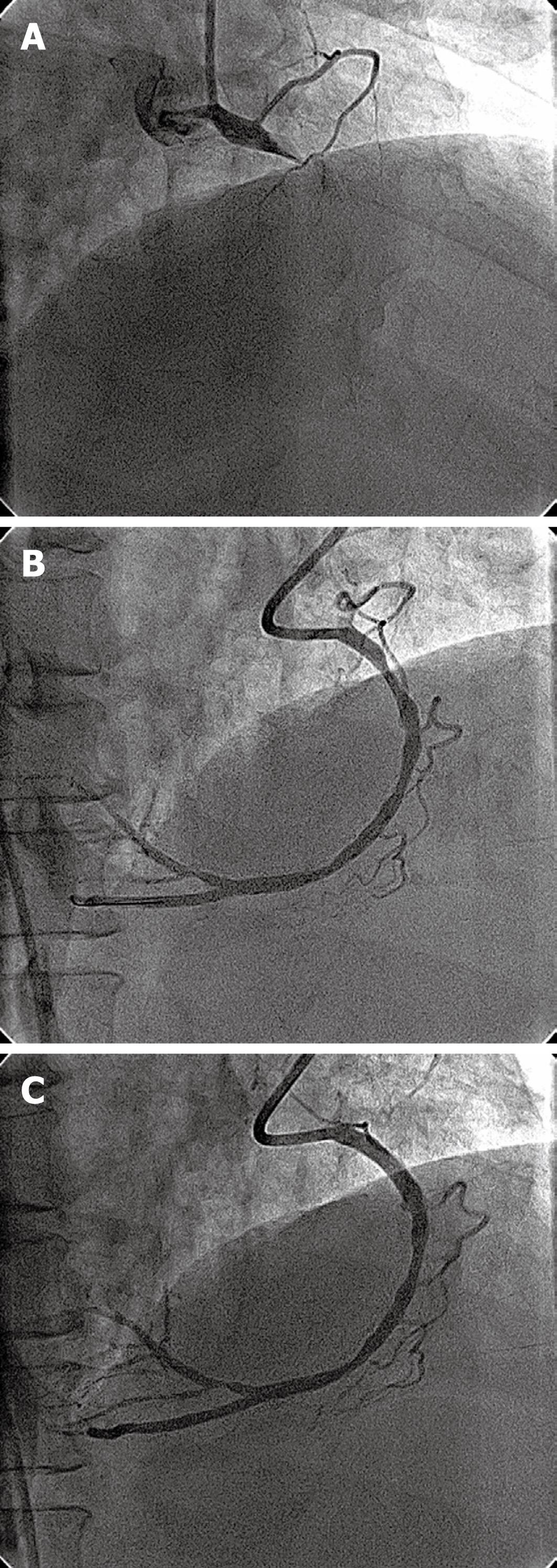Published online Apr 26, 2010. doi: 10.4330/wjc.v2.i4.104
Revised: March 27, 2010
Accepted: April 9, 2010
Published online: April 26, 2010
Situs inversus with dextrocardia is a rare congenital anomaly. There are limited published case reports of successful percutaneous coronary intervention (PCI) in these patients who have atherosclerotic coronary artery disease, especially when presenting with acute myocardial infarction. PCI is technically difficult because of mirror image dextrocardia. We hereby describe a 48-yr-old female, who had acute inferior wall myocardial infarction and underwent successful emergency primary coronary angioplasty and stenting of a proximally occluded right coronary artery. Technical details about PCI are discussed.
- Citation: Vijayvergiya R, Grover A. Percutaneous coronary intervention for acute myocardial infarction in a patient with dextrocardia. World J Cardiol 2010; 2(4): 104-106
- URL: https://www.wjgnet.com/1949-8462/full/v2/i4/104.htm
- DOI: https://dx.doi.org/10.4330/wjc.v2.i4.104
Situs inversus with dextrocardia is a rare congenital malposition of heart and thoraco-abdominal viscera. Coronary artery disease (CAD) with dextrocardia is presumed to be of similar frequency as in the general population. The coronary angiography and percutaneous coronary intervention (PCI) in these patients is technically difficult and requires some modification, such as mirror image angiographic angulation, proper catheter selection and catheter manipulation for selective cannulation of the coronaries. We describe a case of dextrocardia and acute myocardial infarction, with successful emergency coronary angioplasty and stenting of a totally occluded proximal right coronary artery (RCA).
A 48-yr-old pre-menopausal hypertensive female presented with acute persistent chest pain of approximately 24 h duration in May 2007. She was a known case of situs inversus with dextrocardia. Clinical examination revealed a right-sided apex beat and no left ventricular third heart sound or murmur. Her routine biochemistry was normal and lipids showed total cholesterol was l84 mg%, HDL was 36 mg%, LDL was 40 mg%, and triglycerides were 101 mg%. ECG showed a negative P wave in the I and aVL limb leads, a positive R wave in the aVR limb leads, a prominent S wave in the left side chest leads and a prominent R wave in the right sided chest leads (Figure 1A and B), which is suggestive of situs inversus with dextrocardia. A ST elevation in the inferior limb leads was suggestive of acute inferior wall myocardial infarction. She was prepared for urgent coronary angiography. The left coronary was easily cannulated with a Judkins Left 4, 6F catheter. The left main coronary artery and its branches were normal (Figure 2). The RCA was cannulated with anti-clockwise rotation of a Judkins Right 4, 6F catheter. There was initial difficulty in localizing the RCA ostium in the aortic root, but later it was selectively cannulated and showed proximal total cutoff (Figure 3A). Following written informed consent for PCI, the RCA was attempted to be selectively cannulated with an extra support guide catheter (ECR 3.5, 6F, Medtronic), but this was not successful despite an anti-clockwise rotation and changing the angulation from LAO 60° to mirror image RAO 60°. During manipulation, the catheter entered twice in the left ventricle and resulted in an episode of ventricular tachycardia each time, which was successfully reverted to normal sinus rhythm by 300 Joules DC shock. Later, a Judkins Right 3.5, 6F guide catheter was able to cannulate the RCA ostium successfully, though with some difficulty and following anti-clockwise rotation. The proximal RCA lesion was crossed with an All Track Wire (ATW) coronary guide wire (Cordis Co., Miami, Florida) and dilated with a 2.5 mm × 20 mm Sprinter balloon (Medtronic, Inc., Minneapolis, Minnesota) thrice, which restored the flow in the RCA (Figure 3B). The door to balloon time was 90 min. Injection of an abciximab intra-coronary bolus was followed by intravenous infusion. A 4 mm × 15 mm Driver stent (Medtronic) was deployed at 15 atmospheres in the proximal RCA, which resulted in TIMI-3 flow (Figure 3C). The total fluoroscopy time of the procedure was 38 min. A 2-D echocardiogram on the next day showed situs inversus and dextrocardia, mild inferior wall hypokinesia and a left ventricular ejection fraction of 0.60. She had an uneventful recovery and was discharged after 2 d on dual antiplatelets, atorvastatin and anti-hypertensive drugs. At 34 mo of follow-up, she was asymptomatic in NYHA functional class 1.
Situs inversus with dextrocardia is a rare congenital anomaly and presents in approximately one per 10 000 individuals[1]. In the absence of other structural heart disease, the life expectancy is usually normal. The association of CAD in these patients is the same as in the general population[2], hence, even elderly patients with this rare anomaly have been subjected to successful percutaneous or surgical intervention of CAD, as reported in the literature[3,4]. The selective cannulation of the RCA might be difficult because of mirror images, for which the operator is not accustomed and also one has to rotate the catheter anticlockwise in the aorta, instead of the routine clockwise rotation for cannulation of the RCA[5].
In the index case, the RCA cannulation was difficult both for a diagnostic angiogram and for PCI, even though it was tried in a standard LAO 60° and also the mirror imaged RAO 60° view, and with anti-clockwise rotation of the catheter. This technical difficulty was secondary to different spatial positions of the RCA ostium, for which one is not accustomed in routine catheterization practice. A double-inversion technique of Goel[6], in which all angiographic pictures are normalized to the standard conventional pictures, as seen in a normally located heart by doing a combination of a right-left reversal of the image on the monitor using the “horizontal sweep reverse” function during acquisition and a reversed RAO/LAO angle selection, can help in better localization and delineation of the coronary anatomy. However, following selective cannulation of the RCA and guide wire crossing, we could perform the successful PCI without the use of the “double reverse technique”. Though PCI in dextrocardia patients has already being reported in the published literature[3,7-9], the index case is important in view of the technical difficulty in selective cannulation of the ostium of the RCA and successful emergency primary angioplasty of a totally occluded RCA. In conclusion, we report a rare case of acute myocardial infarction in a case of situs inversus with dextrocardia, with successful emergency primary coronary angioplasty and stenting of a totally occluded RCA.
Peer reviewers: Peter W Radke, Professor, Leitender Oberarzt, Medizinische Klinik 2, Kardiologie, Angiologie, Internistische Intensivmedizin, Universitätsklinikum Schleswig-Holstein Campus Lübeck, Ratzeburger Allee 160, D-23538 Lübeck, Germany; Dr. Cezar S Staniloae, St Vincent's Medical Center, 170 west 12 street Spellman 990, NY 10011, United States; Paul Erne, MD, Professor, Head, Department of Cardiology, Luzerner Kantonsspital, CH-6000 Luzern 16, Switzerland
S- Editor Cheng JX L- Editor Lutze M E- Editor Zheng XM
| 1. | Rosenberg HN, Rosenberg IN. Simultaneous association of situs inversus, coronary heart disease and hiatus hernia; report of a case and review of literature. Ann Intern Med. 1949;30:851-859. |
| 2. | Hynes KM, Gau GT, Titus JL. Coronary heart disease in situs inversus totalis. Am J Cardiol. 1973;31:666-669. |
| 3. | Bonde P, Campalani GF. Myocardial revascularization for situs inversus totalis and dextrocardia. Interact Cardiovasc Thorac Surg. 2003;2:486-488. |
| 4. | Saadi EK, Dussin LH, Nicolao A, Zago AJ. Coronary artery bypass grafting in a patient with situs inversus totalis and dextrocardia. Rev Bras Cir Cardiovasc. 2007;22:346-348. |
| 5. | Blankenship JC, Ramires JA. Coronary arteriography in patients with dextrocardia. Cathet Cardiovasc Diagn. 1991;23:103-106. |
| 6. | Goel PK. Double-inversion technique for coronary angiography viewing in dextrocardia. Catheter Cardiovasc Interv. 2005;66:281-285. |
| 7. | Robinson N, Golledge P, Timmis A. Coronary stent deployment in situs inversus. Heart. 2001;86:E15. |
| 8. | Patanè S, Marte F, Di Bella G. Acute myocardial infarction due to right coronary artery occlusion in dextrocardia. Int J Cardiol. 2008;129:e71-e73. |
| 9. | Zambrano J, De la Hera A, De Marchena E. Mechanical reperfusion during acute myocardial infarction in a patient with dextrocardia. J Invasive Cardiol. 2006;18:E89-E92. |











